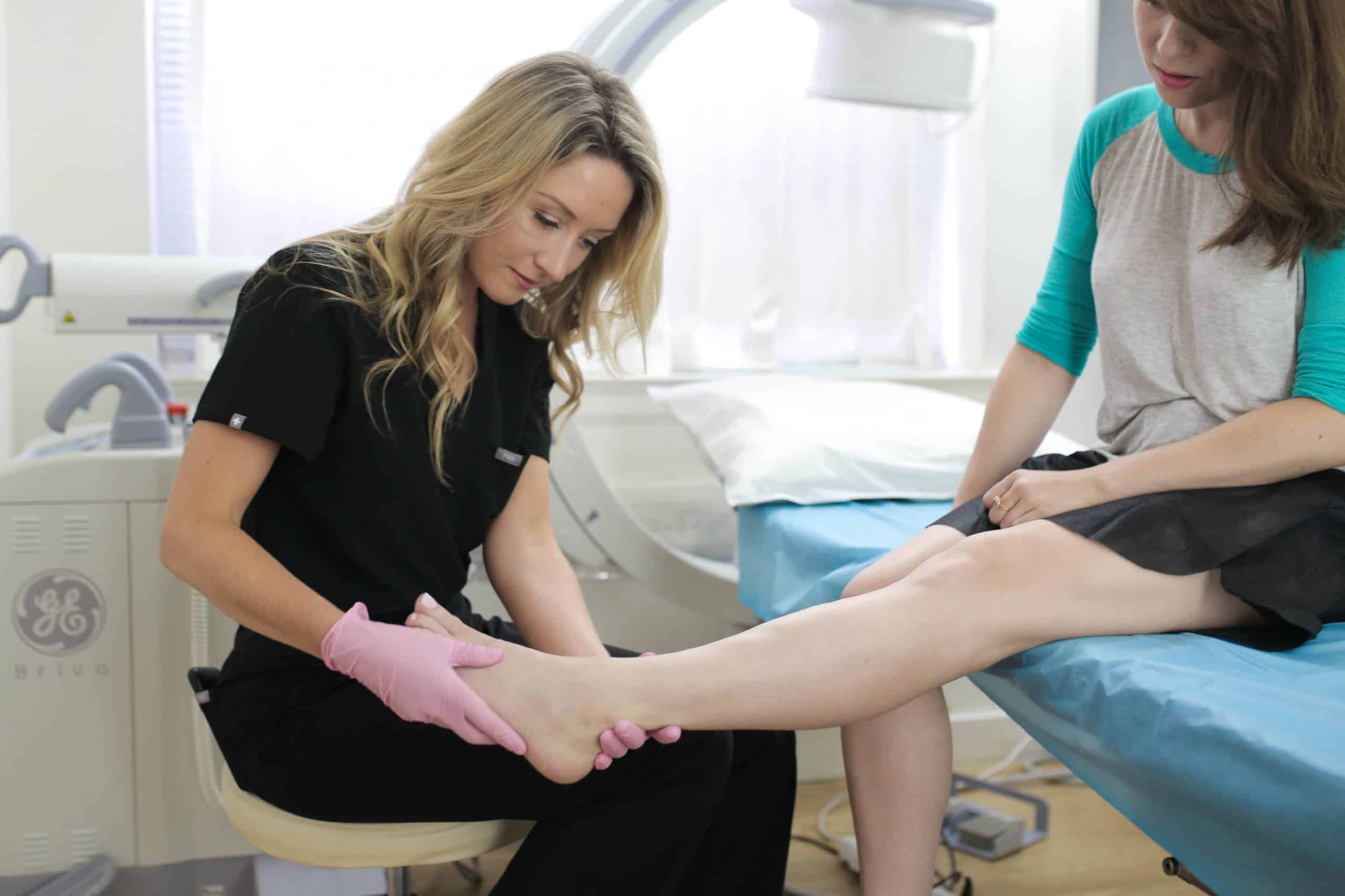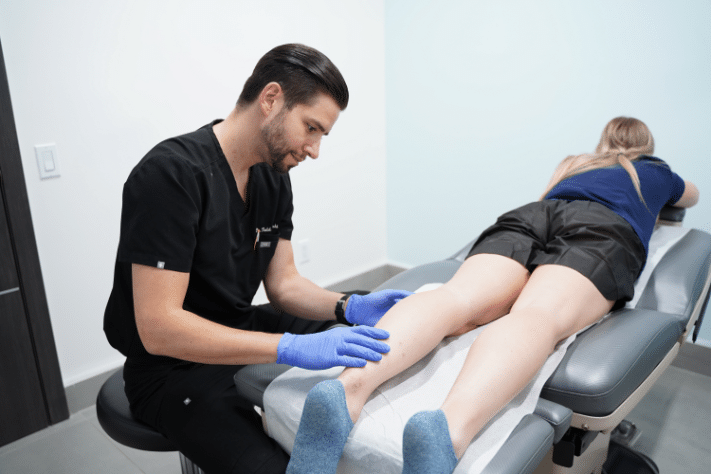What are Varicose Veins, and Why Do They Develop?
Varicose veins are a common vascular condition that affects a significant number of individuals worldwide. Despite their prevalence, many people are unclear about what varicose veins are, why they develop, and whether their treatment is covered by insurance. In this comprehensive article, we will delve into the intricacies of varicose veins, explore the factors contributing to their development, discuss the nuances of insurance coverage, and provide guidance on when it's crucial to seek the expertise of a vascular doctor.
Are varicose veins covered by insurance
Varicose veins are enlarged, twisted veins that often appear dark purple or blue. They most commonly occur in the legs and can be seen just beneath the surface of the skin. But what causes these veins to take on such a distinctive and sometimes painful appearance?
The Anatomy of Veins
To comprehend varicose veins, it's essential to understand the basic anatomy of veins. Veins are blood vessels responsible for returning deoxygenated blood from the body back to the heart. Unlike arteries, which have muscular walls to propel blood forward, veins rely on a series of one-way valves to prevent blood from flowing backward.

The Role of Valves in Varicose Veins
In cases of varicose veins, these valves become weakened or damaged, leading to a backward flow of blood. This condition, known as venous insufficiency, causes blood to pool in the veins, resulting in their enlargement and the characteristic twisting appearance. Several factors contribute to the development of weakened valves, including genetics, age, gender, and lifestyle factors.
Genetic Predisposition
Genetics play a significant role in determining an individual's susceptibility to varicose veins. If a person has a family history of venous insufficiency, they are more likely to develop varicose veins themselves. Understanding this genetic predisposition can be crucial in identifying and addressing the risk early on.
Age and Gender Factors
As individuals age, the natural wear and tear on the veins can contribute to the development of varicose veins. Additionally, hormonal changes, especially in women during pregnancy and menopause, can influence vein health. The combination of these factors often explains why varicose veins are more prevalent in older individuals and women.

Lifestyle and Environmental Factors
Certain lifestyle choices and environmental factors can also increase the risk of developing varicose veins. Prolonged periods of standing or sitting, lack of physical activity, obesity, and exposure to excessive heat can all contribute to venous insufficiency. Understanding how these factors impact vein health can guide individuals in making lifestyle changes to reduce their risk.
Insurance Coverage for Varicose Vein Treatment
With the knowledge of what varicose veins are and why they develop, the next question many individuals have is whether the treatment for varicose veins is covered by insurance. The answer to this question can vary based on several factors, including the severity of the condition, the chosen treatment method, and individual insurance policies.
Severity of Varicose Veins
Insurance coverage for varicose vein treatment often depends on the severity of the condition. If varicose veins are causing significant symptoms such as pain, swelling, or skin changes, insurance is more likely to cover the necessary interventions. Mild cases that are primarily cosmetic may be less likely to receive coverage.
Treatment Methods and Insurance Coverage
There are various treatment options available for varicose veins, ranging from conservative measures such as lifestyle changes and compression stockings to more invasive procedures like sclerotherapy or endovenous laser treatment (EVLT). Insurance coverage can be influenced by the chosen treatment method, with more conservative approaches generally having a higher likelihood of coverage.
Individual Insurance Policies
Insurance coverage for varicose vein treatment varies among different insurance providers and individual policies. It is crucial for individuals to carefully review their insurance policy documents or consult with their insurance provider to understand the specifics of coverage for varicose vein treatments. Some policies may have specific criteria or requirements that must be met for coverage to be approved.
When to See a Vascular Doctor
Given the potential impact of varicose veins on both physical health and quality of life, it's essential to know when to seek the expertise of a vascular doctor. While some individuals may choose to consult a doctor primarily for cosmetic reasons, there are specific signs and symptoms that should prompt a visit to a vascular specialist.
Persistent Pain or Discomfort
Varicose veins can cause varying degrees of pain and discomfort, ranging from aching and throbbing to sharp or burning sensations. If these symptoms persist or worsen, it's advisable to consult a vascular doctor for a thorough evaluation.
Swelling or Skin Changes
Swelling in the legs, especially around the ankles, can be indicative of venous insufficiency. Additionally, skin changes such as discoloration, redness, or the development of ulcers should not be ignored. These signs may suggest advanced stages of varicose veins that require prompt attention.
Impact on Daily Activities
If varicose veins are significantly impacting daily activities or diminishing the quality of life, it's time to consult a vascular doctor. This includes limitations in mobility, interference with work, or challenges in participating in regular exercise.
Failed Conservative Measures
Individuals who have tried conservative measures such as lifestyle changes and compression stockings without significant improvement should seek professional medical advice. A vascular doctor can assess the condition more comprehensively and recommend appropriate interventions.
Conclusion
Varicose veins are a common vascular condition with various contributing factors. Understanding the anatomy of veins, the role of valves, and the impact of genetics, age, gender, and lifestyle can provide valuable insights into why varicose veins develop. When considering treatment, it's crucial to be aware of the factors that influence insurance coverage and to consult individual insurance policies for clarity.
Recognizing when to seek the expertise of a vascular doctor is equally important. Persistent pain, swelling, skin changes, and limitations in daily activities are all signs that warrant professional evaluation. By addressing varicose veins proactively, individuals can not only improve their cosmetic appearance but also enhance their overall vascular health and well-being.
Comments
Post a Comment